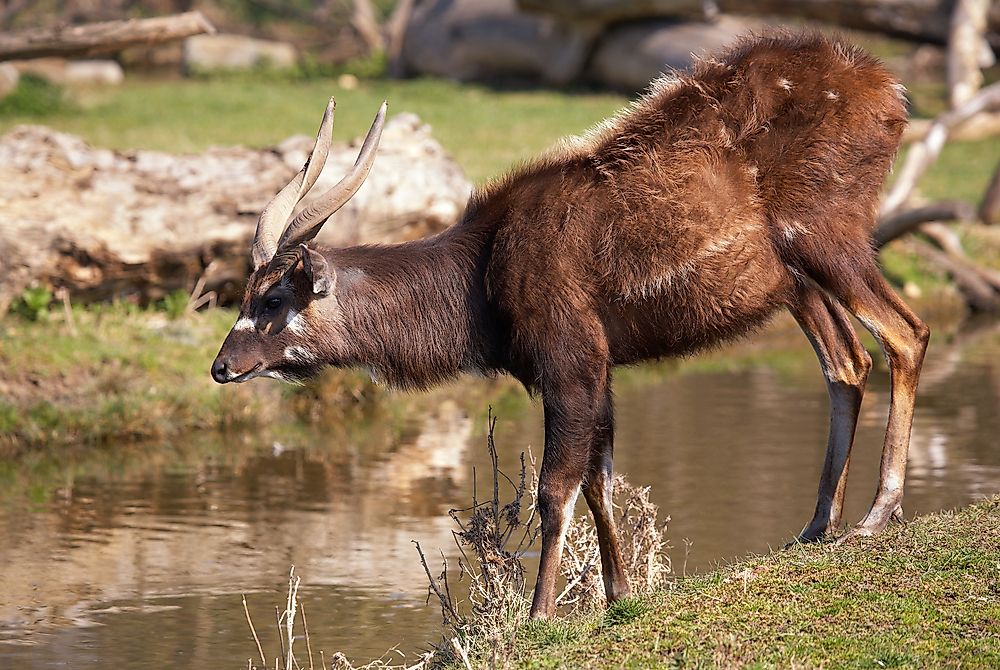Sitatunga Facts - Animals of Africa

The sitatunga (Tragelaphus spekii) also goes by the name marshbuck and it is a medium sized antelope. Their hooves are banana shaped allowing them to walk in water slowly and quietly. The sitatunga has a sharp hearing ability. This enables the animal to determine accurately the sources of sound. The horns on males face backward and they have a wedge shape. This, coupled with the lowering of the head, enables them to pass easily through the vast vegetation.
Size and Appearance
Females range between 72cm to 90cm in length while males range from 81cm to 116cm in length. In terms of weight, females weigh between 24kg and 57kg while males weigh between 76kg and 119kg. Sitatunga has water-resistant shaggy fur. The antelopes differ in colors depending on the environment. Their young ones are rufous red while females are chestnut in color. The males change to a gray or dark-brown color as they grow older.
Habitat and Range
Sitatungas dwell in marshy and swampy areas. They can also live both in water and on land. Sitatungas thrive in vast and tall perennial vegetation. Furthermore, they make small homes close to water in the savanna. Sitatungas are native to Gabon, Ghana, Nigeria, and Cameroon among other countries. They also inhabit the swampy areas of South Africa and central Africa. Habitat clearance by humans is a threat to Sitatunga’s survival. The change in water levels also affects vegetation, hence reducing their food.
Behavior
Sitatungas use most of their time for feeding. They are mainly active at night and early morning after dawn. Sitatungas rest on beds made of reeds and flat areas during hot sunny days. Generally, sitatungas live solitary lifestyles or pair up. However, at times they may also walk in large groups. Most sitatungas like associating with others of the same gender. Sitatungas do not have boundaries. Males lock horns with others and destroy plants using their horns. At night, sitatungas may start coughing or barking and others will join. This noise spreads throughout the swamp.
Diet
Sitatungas are mixed and selective feeders. They feed on sedges, new forage, and fresh grass. Their favorite plants include aquatic grass, bulrushes, and sedges. They feed in wet areas but their preference may differ in swamps that experience seasonal water changes. Studies indicate that herbs are the favorite food of the sitatunga while sweet potatoes are the preferred crop. Sitatungas may stand on their back legs to feed on tall tree branches or pull them down using their horns.
Reproduction
Female sitatungas acquire sexual maturity at the age of one year while males mature at one and a half years. They breed the entire year and the males contest for the opportunity to mate. The gestation period in statunga is eight months and often one calf is born. The calves are always covered. Their mothers only expose them when there are many sitatungas around. The calf suckles for a period of six months.











